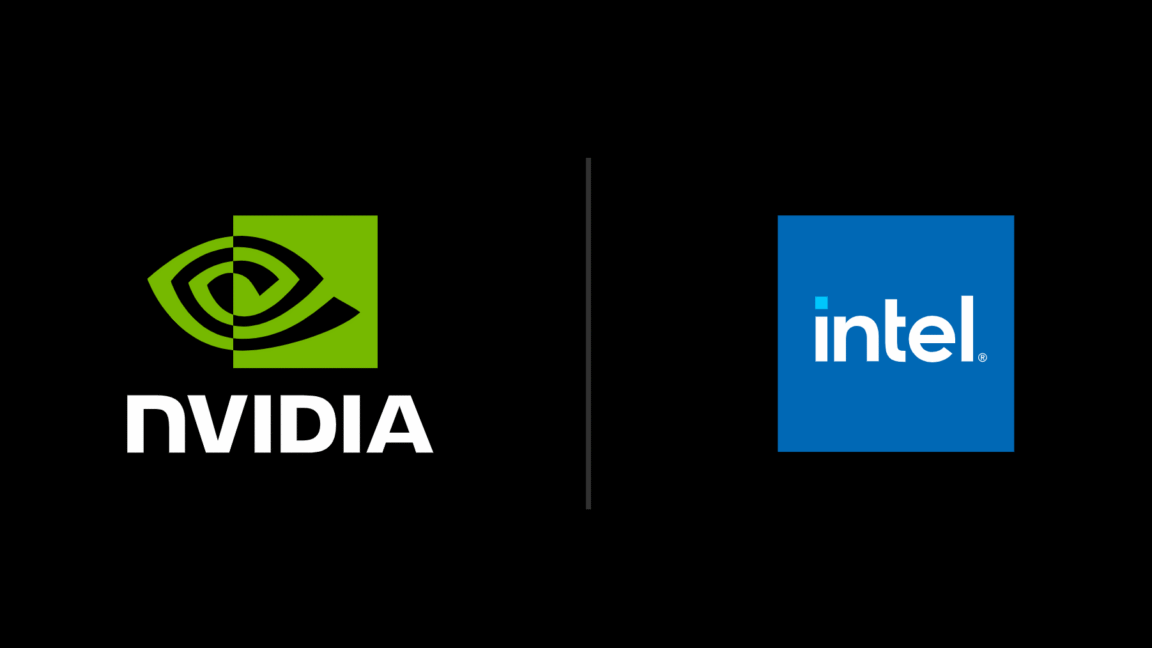Technology
Nvidia Invests $5 Billion in Intel, Collaborates on New Chips

Nvidia announced an investment of $5 billion in Intel, marking a significant shift in the competitive landscape between the two technology giants. This deal grants Nvidia a 4 percent ownership stake in Intel, allowing the companies to collaborate on developing future server and personal computer chips. The announcement, made on March 15, 2024, comes as both companies aim to leverage their respective strengths in artificial intelligence and computing technologies.
Under the terms of the partnership, Nvidia and Intel will co-develop “multiple generations of custom data center and PC products.” According to Nvidia’s press release, the collaboration will focus on integrating Nvidia’s AI capabilities with Intel’s leading CPU technologies. This integration aims to deliver advanced solutions tailored to meet customer needs. The custom chips will be based on Intel’s x86 architecture, specifically designed to Nvidia’s specifications, rather than merging the companies’ existing technologies.
Intel plans to produce system-on-chip (SoC) designs that will combine its CPUs with Nvidia’s RTX graphics chiplets. This approach could lead to more compact and efficient gaming laptops, and potentially open doors for Nvidia in the handheld gaming market, competing with devices like the Steam Deck.
Significant changes have occurred in the tech industry since 2005, when Intel considered acquiring Nvidia for as much as $20 billion. At that time, Nvidia was primarily recognized for its GeForce graphics chips, while Intel was solidifying its dominance in the PC market with its Core processors. In recent years, Nvidia’s revenue has surged, driven by the demand for its data center chips that support AI functionalities. Conversely, Intel has faced challenges in enhancing its chip manufacturing capabilities, struggling to keep pace with competitors such as TSMC.
The collaboration announcement coincided with China’s recent ban on Nvidia’s AI chip sales, including products designed specifically for the Chinese market. The Chinese government is promoting domestic chipmakers like Huawei and Cambricon to develop their own AI solutions, intensifying competition in the sector. While it is unlikely that Nvidia’s $5 billion investment was a direct response to the ban, it reflects a broader strategy to bolster US-based chip manufacturing amidst geopolitical tensions.
Nvidia’s CEO, Jensen Huang, has been proactive in engaging with US political leadership, particularly during the Trump administration. In the past month, plans for a 10 percent stake in Intel by the US government were announced, although this investment has potential downsides for Intel, including disruptions to its international business and limitations on future government contracts.
The partnership raises questions about the future of product overlap between Nvidia and Intel. Both companies have historically competed in various markets, particularly in graphics processing. Intel has been working on its own graphics solutions, such as the Arc series, which directly challenge Nvidia’s offerings. Intel confirmed that it would continue to develop its GPU products, likely focusing on lower-end, low-power options while leaving higher-end products to Nvidia.
The collaboration could also affect software development. Intel has been promoting its oneAPI platform as an alternative to Nvidia’s CUDA, which has been widely adopted in the industry. The outcome of this collaboration may lead to various scenarios, including Nvidia allowing Intel GPUs to run CUDA code or contributing to the oneAPI initiative.
Another critical consideration is the manufacturing process for the new chips. Currently, Nvidia’s products are primarily produced at TSMC, although the company has utilized Samsung’s facilities in the past. Intel, on the other hand, manufactures its server chips in-house and plans to bring its next-generation consumer chips back to its own factories. The collaboration could see some chips manufactured using Intel’s 18A process or a combination of both companies’ facilities.
As both companies prepare for a joint press conference scheduled for 1 PM ET today, further details on the partnership and its implications are expected to emerge. The collaboration represents a significant evolution in the tech landscape, reflecting changing dynamics and the need for innovation to address growing market demands.
-

 Science2 months ago
Science2 months agoToyoake City Proposes Daily Two-Hour Smartphone Use Limit
-

 Health3 months ago
Health3 months agoB.C. Review Reveals Urgent Need for Rare-Disease Drug Reforms
-

 Top Stories3 months ago
Top Stories3 months agoPedestrian Fatally Injured in Esquimalt Collision on August 14
-

 Technology2 months ago
Technology2 months agoDark Adventure Game “Bye Sweet Carole” Set for October Release
-

 World2 months ago
World2 months agoJimmy Lai’s Defense Challenges Charges Under National Security Law
-

 Technology3 months ago
Technology3 months agoKonami Revives Iconic Metal Gear Solid Delta Ahead of Release
-

 Technology3 months ago
Technology3 months agoSnapmaker U1 Color 3D Printer Redefines Speed and Sustainability
-

 Technology2 months ago
Technology2 months agoAION Folding Knife: Redefining EDC Design with Premium Materials
-

 Technology3 months ago
Technology3 months agoSolve Today’s Wordle Challenge: Hints and Answer for August 19
-

 Business3 months ago
Business3 months agoGordon Murray Automotive Unveils S1 LM and Le Mans GTR at Monterey
-

 Lifestyle3 months ago
Lifestyle3 months agoVictoria’s Pop-Up Shop Shines Light on B.C.’s Wolf Cull
-

 Technology3 months ago
Technology3 months agoApple Expands Self-Service Repair Program to Canada









